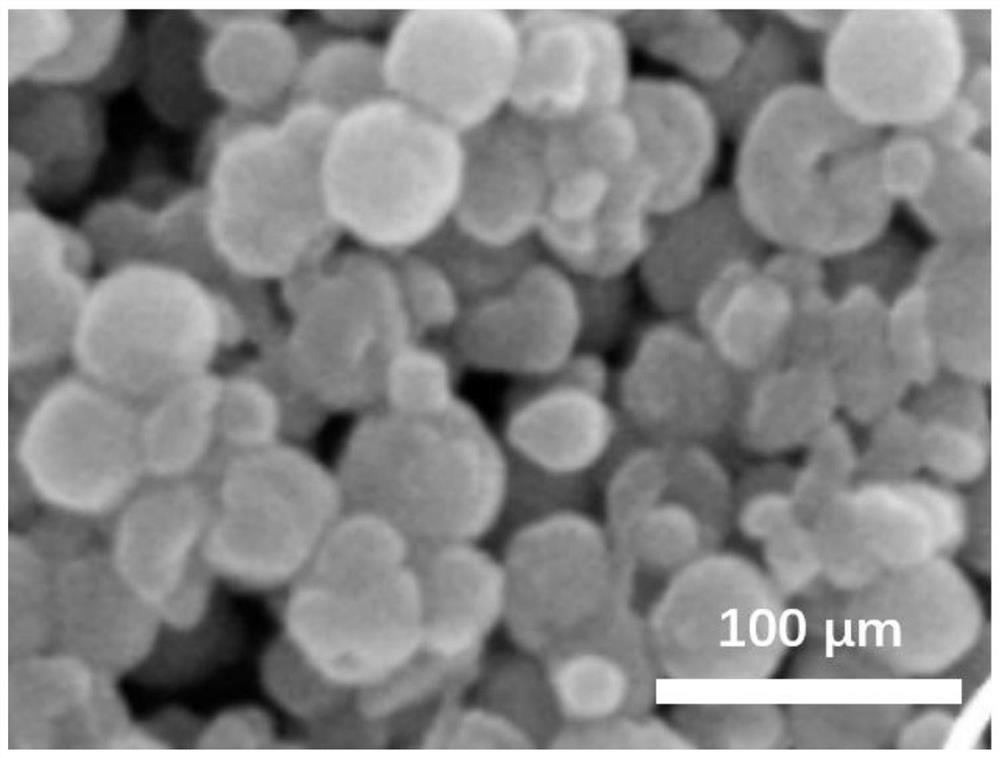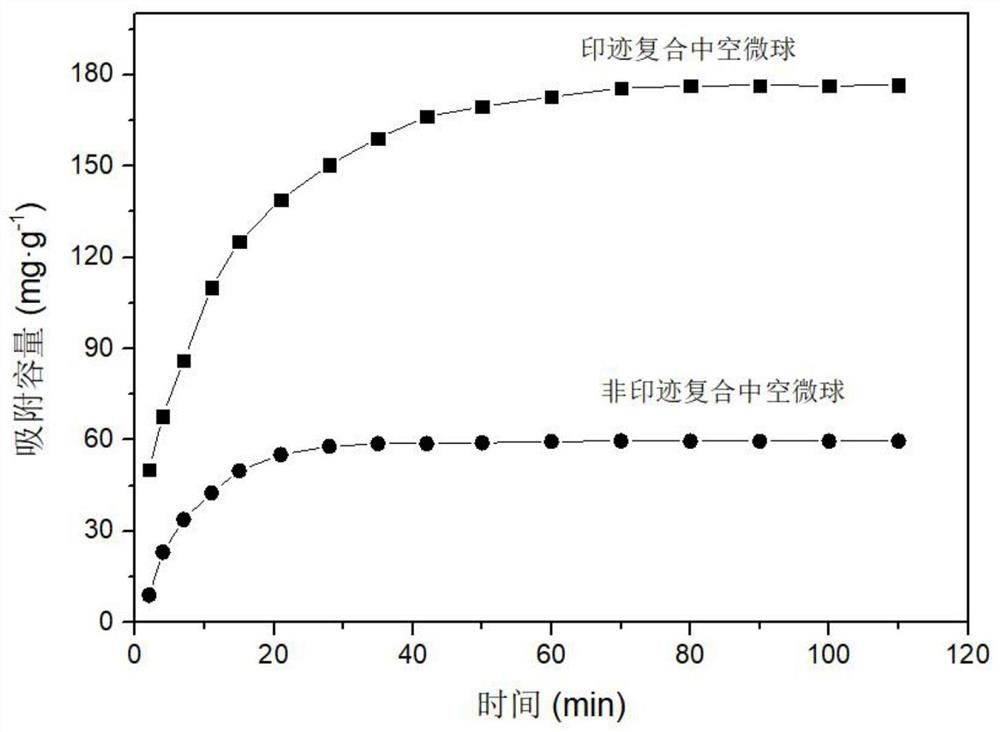a sio 2 Preparation method of chitosan-based lead ion-imprinted hollow microspheres
A lead ion and chitosan technology is applied in the field of preparation of SiO2/chitosan-based lead ion imprinted composite hollow microspheres, which can solve the problems of reduced adsorption capacity and loss of reactivity of chitosan, and achieves improved adsorption performance, The effect of high porosity and high porosity
- Summary
- Abstract
- Description
- Claims
- Application Information
AI Technical Summary
Problems solved by technology
Method used
Image
Examples
Embodiment 1
[0037] (1) The preparation of the quenching solution is as follows: add 1 g of polyurethane, 3 g of acetone, and 12 g of tetrahydrofuran to a 100-mL three-necked flask, stir magnetically at 50°C for 2 hours, and dissolve to form a homogeneous solution. 0.02 g of nano-hydroxyapatite was added to the homogeneous solution, and the solution was magnetically stirred and uniformly mixed at room temperature to obtain a quenching solution. Put the quenching solution in a refrigerator pre-cooled to -20 °C for 4 hours. After quenching, take it out of the refrigerator quickly, put it into 500 mL of ice-water mixture, remove acetone and tetrahydrofuran, and repeatedly change distilled water, wash, and freeze-dry to obtain polyurethane. Microspheres.
[0038] (2) 10g of ethanol, 30g of distilled water, 1.2g of sodium silicate, 0.1g of polyethylene glycol, and 0.01g of cetyltrimethylammonium bromide were added to the there-necked flask, and dissolved by magnetic stirring. After the dissolut...
Embodiment 2
[0042](1) The quenching solution was prepared as follows: add 1.5 g of polyurethane, 4 g of acetone, and 8 g of tetrahydrofuran to a 100-mL three-necked flask, stir magnetically at 50°C for 2 hours, and dissolve to form a homogeneous solution. 0.04 g of nano-hydroxyapatite was added to the homogeneous solution, and the solution was magnetically stirred and mixed at room temperature to obtain a quenching solution. Put the quenching solution in a refrigerator pre-cooled to -30°C for 5 hours. After quenching, take it out of the refrigerator quickly, put it into 500 mL of ice-water mixture, remove acetone and tetrahydrofuran, and repeatedly change distilled water, wash, and freeze-dry to obtain polyurethane. Microspheres.
[0043] (2) 25g of ethanol, 30g of distilled water, 1.5g of sodium silicate, 0.1g of polyethylene glycol, and 0.01g of cetyltrimethylammonium bromide were added to the there-necked flask, and dissolved by magnetic stirring. After the dissolution was completed, 0...
Embodiment 3
[0047] (1) The preparation of the quenching liquid is as follows: add 1.2 g of polyurethane, 5 g of acetone, and 7 g of tetrahydrofuran to a 100-mL three-necked flask, stir magnetically at 50°C for 2 hours, and dissolve to form a homogeneous solution. 0.03 g of nano-hydroxyapatite was added to the homogeneous solution, and the solution was magnetically stirred and uniformly mixed at room temperature to obtain a quenching solution. Put the quenching solution in a refrigerator pre-cooled to -25 °C for 3 hours. After quenching, take it out of the refrigerator quickly, put it into 500 mL of ice-water mixture, remove acetone and tetrahydrofuran, and repeatedly change distilled water, wash, and freeze-dry to obtain polyurethane. Microspheres.
[0048] (2) 20g of ethanol, 30g of distilled water, 1.8g of sodium silicate, 0.1g of polyethylene glycol, and 0.01g of cetyltrimethylammonium bromide were added to the there-necked flask, and dissolved by magnetic stirring. After the dissoluti...
PUM
| Property | Measurement | Unit |
|---|---|---|
| diameter | aaaaa | aaaaa |
| specific surface area | aaaaa | aaaaa |
| diameter | aaaaa | aaaaa |
Abstract
Description
Claims
Application Information
 Login to View More
Login to View More - R&D
- Intellectual Property
- Life Sciences
- Materials
- Tech Scout
- Unparalleled Data Quality
- Higher Quality Content
- 60% Fewer Hallucinations
Browse by: Latest US Patents, China's latest patents, Technical Efficacy Thesaurus, Application Domain, Technology Topic, Popular Technical Reports.
© 2025 PatSnap. All rights reserved.Legal|Privacy policy|Modern Slavery Act Transparency Statement|Sitemap|About US| Contact US: help@patsnap.com



